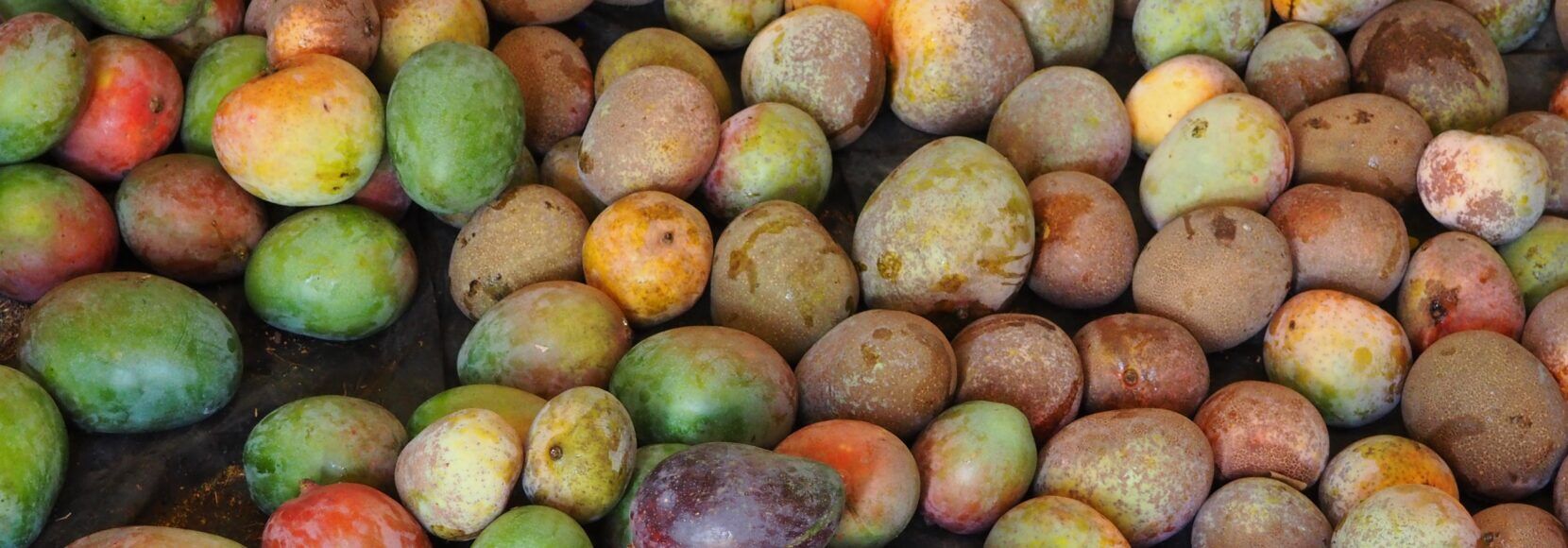
Unlocking Nutritious Opportunities: Reducing Food Loss and Waste to Enhance Nutrition and Food Security in Sub-Saharan Africa
By partnering to develop innovative solutions, we can tackle both the challenge of food waste along the supply chain and the pressing issue of food security among low-income populations, ultimately creating a more sustainable and equitable food system.
Editor’s Note: The following article was originally published in 2023.
In Kenya’s bustling Wakulima Market, where fruits and vegetables change hands multiple times before reaching consumers, a paradox unfolds. The vibrant marketplace is essential to feeding families and communities: more than 80% of Kenya’s produce flows through informal markets like this. At the same time, these markets are plagued by food loss and elevated prices.
Much of what Kenya’s farmers produce, upwards of 40% for some crops, is lost along the way: from post-harvest handling on the farm, to limited cold chain, transport, and storage infrastructure, to inefficient supply and demand planning at the market level. This perpetuates a costly cycle: inefficiencies lower profits for farmers and traders, drive up prices for consumers and reduce the amount of nutritious food available, all while creating an unnecessary carbon footprint.
Redirecting surplus fruits and vegetables to nutritional-deficit households presents a transformative opportunity, particularly in sub-Saharan Africa, where daily fruit and vegetable consumption falls well below recommended levels. But how can we identify effective, lasting solutions to this challenge? Today, there is no formal system for ensuring that second-grade produce — safe for consumption yet with color, size, shape, or other cosmetic imperfections — reaches Kenya’s low-income consumers, the majority of whom are urban and peri-urban women with limited access to nutritious fruits and vegetables.
The NutriSave program — implemented by TechnoServe with funding from the Gates Foundation and the Foreign Commonwealth and Development Office (FCDO) shows how coupling analytical research into the critical loss points along horticulture supply chains with an innovative, human-centered design process to identify and test new market-led products and services can help to close this gap.
The dual challenges of food waste and food security
The challenges surrounding food loss and waste and food security in low-income countries are complex and multifaceted. These challenges often interact with and exacerbate one another, making it crucial to address them holistically.
Key challenges include:
- Complex supply chains: Before fresh produce reaches consumers in Kenya, it often passes through a convoluted network of intermediary agents, resulting in price escalation and significant food loss along the way.
- Data opacity: While significant research has assessed and quantified food loss at the “farm-gate” level, less focus has been placed on understanding where and how this loss happens throughout supply chains.
- Seasonality and markets: Loss occurs inconsistently across time due to seasonality and market influxes, driving falling prices and supply gluts. Buyers are unable to fully incorporate these channels into their operating model due to the unpredictability of supply, and aggregators are often left with large fruit and vegetable volumes they must offload over a short period of time.
- Infrastructure and technology: Inadequate access to technologies, like refrigeration, hinders food preservation and production efficiency, while poor road networks and transportation systems limit the movement of food from rural to urban areas.
If these challenges were addressed or even mitigated, redirecting surplus fruits and vegetables to these underserved markets could hold immense potential for improving access to affordable and nutritious food.
An innovative approach
What if tomatoes unsold at day’s end and destined for local landfills were instead redirected to a small processing plant for production of nutritious products steered to local markets? What if new storage and transport solutions reduced the amount of damaged or withered greens, extending shelf life and access? What if digital platforms existed to reduce the friction between those who have surplus along the supply chain, and those who could help repurpose or redirect it to consumers who want it?
TechnoServe, with partners and market actors, has been asking these questions — and more — to identify and test potential solutions. We undertook this using two distinct approaches: deep and wide.
Deep: We followed a mango truck, watched pineapples change hands, observed mountains of discarded tomatoes, helped stack sacks of African leafy vegetables in the backs of bikes and visited informal markets at 3 a.m. when wholesale markets work to understand how much loss happens, when and where. This resulted in a deep analysis that helped us highlight the distinct roles of various stakeholders within the supply chain contributing to production, processing, distribution and marketing while managing losses and waste, generating insights on critical loss points across the value chain, and developing three value chain archetypes advised by less affordable and seasonal fruits and vegetables, affordable and accessible fruits and vegetables, and lower seasonality and high perishability crops.
Wide: Following this analytical assessment, we mapped, gave voice to and drew insights from across and along the value chains of each archetype, from the large-scale traders who buy directly from farmers to individual consumers across Nairobi’s low-income communities, where only 2% of the population consumes the daily recommended amount of fruits and vegetables. Consequently, we employed a human-centered design process, which puts the user at the center of any product development.
Our aim is to identify, pilot and scale innovative solutions that would increase the accessibility of affordable and nutritious foods for low-income consumers within these archetypes, focusing first on mangos, tomatoes and African leafy vegetables. In the coming months, we’ll deepen our efforts across the most promising ideas, working with partners in the marketplace.
A collaboration opportunity
By partnering to develop innovative solutions, we can tackle both the challenge of food waste along the supply chain and the pressing issue of food security among low-income populations, ultimately creating a more sustainable and equitable food system. For more information on how to work with us, please contact Kenya’s country director Kris Ansin (kasin@tns.org) and NutriSave’s program director Carolyne Maina (cmaina@tns.org).

